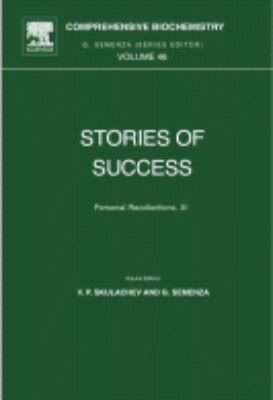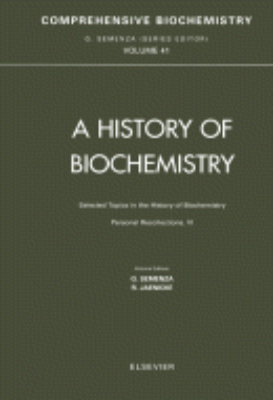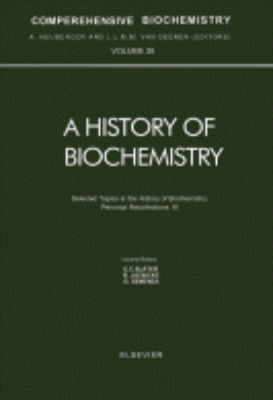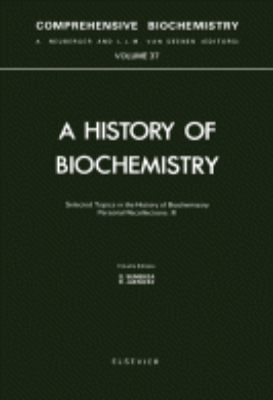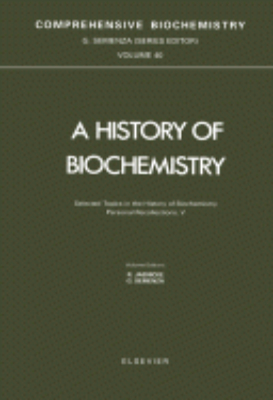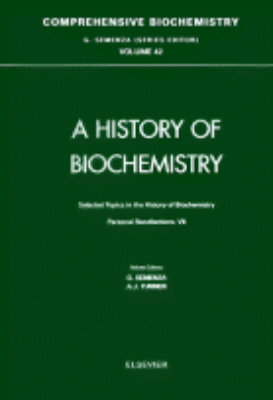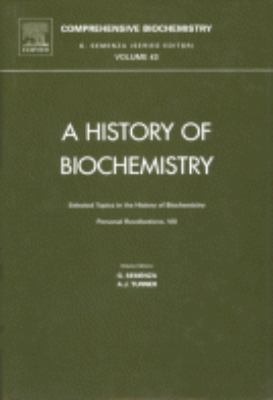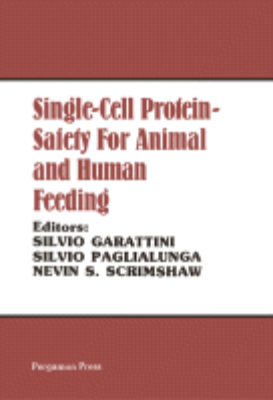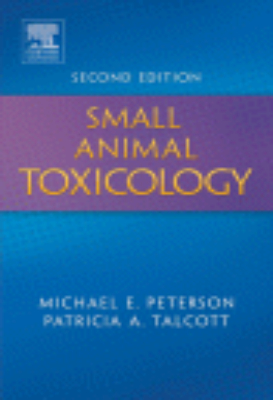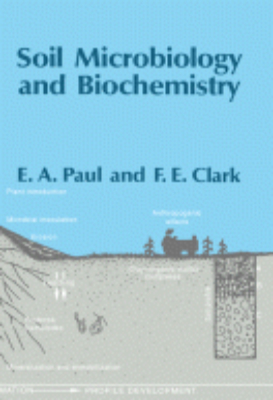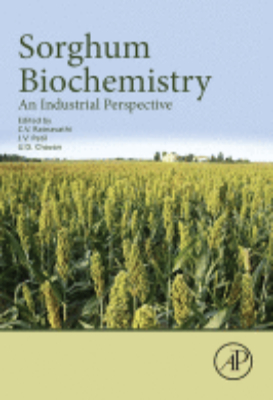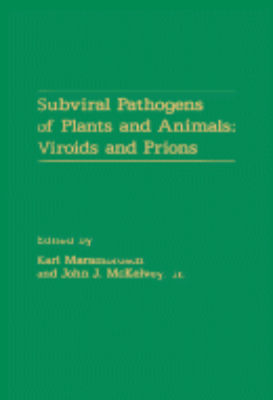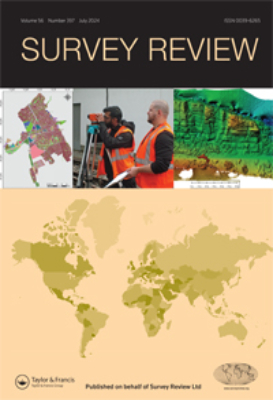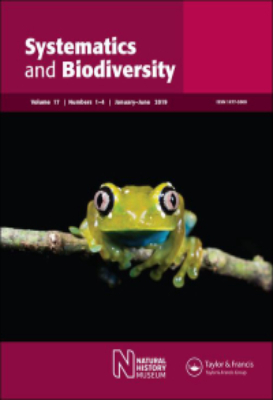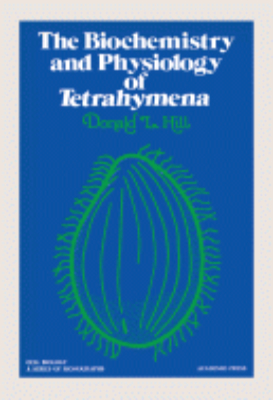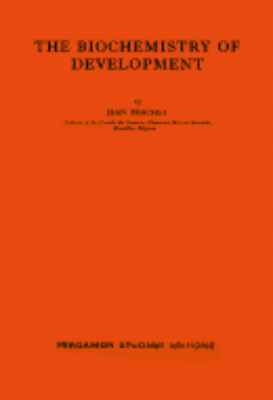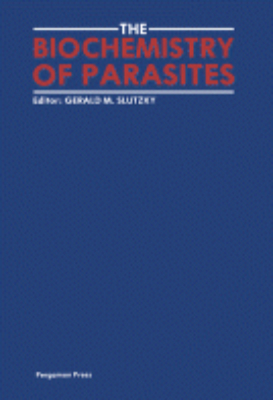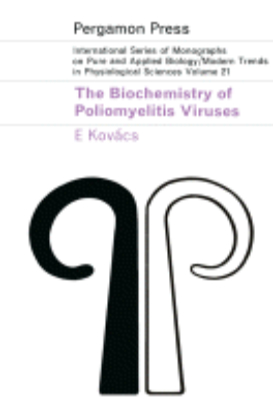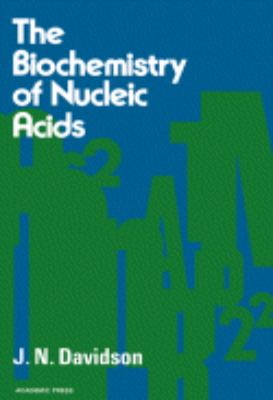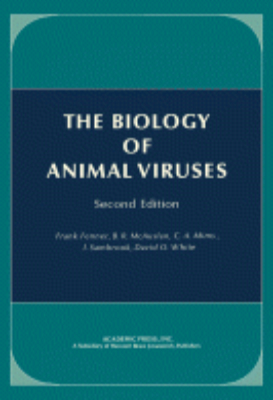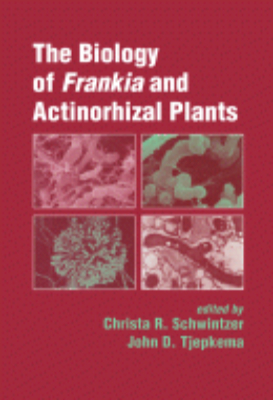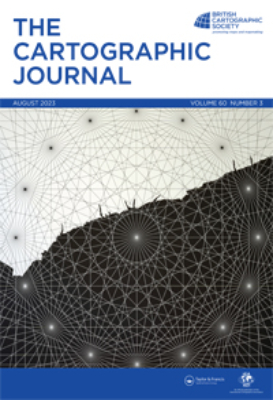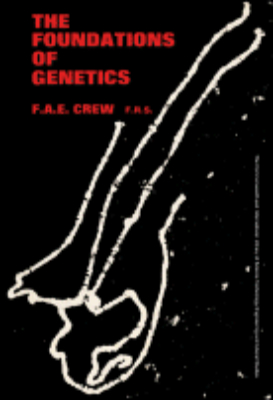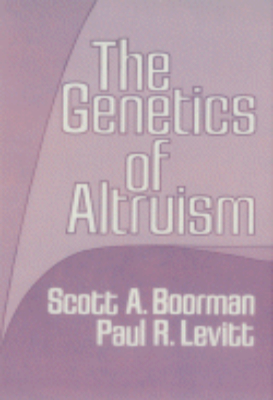Life Science
Single-Cell Protein Safety for Animal and Human Feeding
Single-Cell Protein: Safety for Animal and Human Feeding covers the proceedings of the Protein-Calorie Advisory Group of the United Nations System Symposium Investigations On Single-Cell Protein, held at the Istituto di Ricerche Farmacologiche 'Mario Negri' Milan, Italy, on March 31 April 1,1977. This text is divided into three parts. The first part discusses taxonomy and pathogenicity, including topics on strengths and weaknesses of traditional criteria in the systematics of yeasts; DNA relatedness between physiologically similar strains and species of yeasts; and studies of potential pathogenicity of industrial yeasts. This book then explains the models of pathogenicity for yeasts of the genus Candida, as well as the characteristics and comparative studies of this genus. Metabolism and toxicology of odd-numbered carbon chain fatty acids are also tackled, which is the main topic of the second part of this book. The last part is concerned mainly with the metabolism and toxicology of alkanes. This publication will be invaluable to chemists and students of chemistry and related disciplines.
Small Animal Toxicology: Second Edition 2006
"This revised and expanded reference is a valuable aid for the practicing veterinary clinician in diagnosing and determining treatment for toxic exposures in small animals, and for veterinary students as a supplement to their classroom instruction. It contains chapters addressing nontraditional areas of toxicology not covered in conventional toxicology texts. It also covers areas of toxicology which seem basic but are rarely discussed, such as taking a toxicological history, establishing a minimum database, providing supportive care, and managing emergency treatment of the poisoned patient. The book is organized into three sections, including 20 new chapters and new topics such as grapes and raisins, lilies, ""Christmas time"" plants, mercury, and accidental poisoning in non-traditional pets. Key Features. New two-color design makes the book more esthetically pleasing and allows for quick retrieval of information. Toxic Plant Information Summary tables make treatments for plant intoxications easy to find. Toxic Plant Quick Reference Based on Clinical Signs tables are included, to support small-animal veterinarians in cases of potential toxic plant ingestion. Summary charts at the beginning of each chapter in the Specific Toxicants section contain bulleted lists with clear-cut information on the specific toxicant, the clinical signs, and prognosis. A comprehensive review of all known potentially toxic substances is provided, from A (acetaminophen) to Z (zinc), including the very latest on grape and raisin toxicity making this the most up-to-date and thorough text in this field. 45 different experts contribute to this book, all from the field of veterinary toxicology and medicine. 20 new chapters have been added. New topics include a list of toxicants affecting body systems, management of toxins in pregnancy, diagnostic toxicology, bacterial toxins, and cosmetic/toilet articles. Snake-bite injuries are treated in two separate, expanded chapters: Pit Vipers and Coral Snakes. Section on pharmaceuticals includes bromides, anticonvulsants, tricycle antidepressants, monoamine oxidize inhibitors, B-adrenergic toxicities, and vitamins A and D. Additional specific toxicants are covered, including Amitraz, hydramethylon, ethanol, mercury, toad toxins, poisonous frogs, salamanders, newts and venomous arthropods"
Small Animal Toxicology: Third Edition 2013
"Diagnose and determine treatment for toxic exposures in small animals with this quick reference! Small Animal Toxicology, 3rd Edition covers hundreds of potentially toxic substances, providing the information you need to manage emergency treatment and prevent poisonings in companion animals. To help you identify an unknown poison, this guide provides a list of potential toxins based on clinical signs or symptoms. It also includes a NEW color insert with 85 full-color photographs of toxic plants and of lesions associated with various poisonings. Written by respected veterinarian Michael E. Peterson and board-certified veterinary toxicologist Patricia A. Talcott, along with a team of expert contributors, this edition covers a wide variety of topics including toxicodynamics, toxicokinetics, effective history taking, recognizing clinical signs of toxic exposures, managing emergencies, and supportive care of the poisoned patient. Key Features. Comprehensive coverage of toxins/poisons includes the full range of substances from acetaminophen to zinc, including home products, prescription medicines, recreational drugs, and more.. Guidelines to evaluation, diagnosis and treatment include examinations of the source, toxic dose, toxicokinetics, clinical signs, minimum database, confirming tests, treatment progress and differential diagnosis for each specific toxicant.. Coverage of common poisonous substances includes grapes and raisins, nicotine, mercury, mushrooms, Christmas-time plants, and snake and spider venoms.. Toxicological Concepts section provides information on toxicologic principles such as history taking, providing supportive care, and managing emergency treatment.. General Exposures section addresses nontraditional toxicology such as indoor environmental air, pesticides, pharmaceuticals, and toxicities in pregnant and lactating animals.. Miscellaneous Toxicant Groups section covers commonly encountered specific toxicants, the proper use of diagnostic laboratories, use of human poison control centers, and antidotes for specific toxins.. More than 50 international contributors provide up-to-date, authoritative advice on treating poisonings and intoxications.. 8 NEW chapters cover topics including legal considerations in toxicology cases, responding to mass exposures, and poisonings in birds, small mammals, and geriatric patients.. NEW color insert shows 85 of the most commonly encountered toxic substances for at-a-glance identification.. UPDATED Signs and Symptoms index makes it easier to find information on a toxic agent by presenting signs rather than requiring the formulation of a diagnosis.. UPDATED information on agents most likely to cause a toxic reaction includes natural flea products and an expanded section on human medications.. NEW quick-access format with bold headings and convenient tables and boxes allows quick retrieval of information in emergency situations."
Soil Microbiology and Biochemistry
Soil Microbiology and Biochemsitry enconmpasses the broad spectrum of soil organisms and the dynamic processes carried on by them, including ecological relationships in the biota, the dynamics of the carbon and nitrogen cycles, and microbe-driven reactions involving sulfu, phosphorous, and metals. This reference source will prove invaluable to anyone involved in the study of agricultural and nonagricultural soils. Key Features This book provided a process-oriented approach on nutrient cycling and fundamental soil processes for students who are studying soil microbiology and biochemistry an up-to-date assessment of the diverse systems affected by soil organisms for researchers in the fields of agronomy, environmental quality, and natural sciences the application of molecular biology to soil organisms, mathematic modeling of soil processes, a supplementary reading list, and a glossary.
Sorghum Biochemistry: An Industrial Perspective
"Sorghum Biochemistry: An Industrial Perspective explores the many uses for sorghum in industry and biofuels. Not only does it offer a detailed understanding of the physical and biochemical qualities of the grain, it also takes an in-depth look at the role sorghum plays in such industries as brewing and ethanol production and the mechanics of post-harvest processing and value addition. Sorghum has long been an important staple in Africa and Asia, but its value goes far beyond its uses in human and animal consumption. Sorghum is also used in many industries, including waxes, packing material, wall board, ethanol, beverages, and brewing, and one variety called sweet sorghum has also been used as a bioenergy crop. Sorghum Biochemistry: An Industrial Perspective offers a closer look at how the grain is used in such a variety of ways, and how we can continue to optimize its potential. Key Features. Provides detailed biochemical studies on grain sorghum to inform researchers grappling with similar issues. Offers foundational information on the quality and composition of sorghum as a grain. Covers a variety of uses for sorghum in many industries, including food and beverage, energy, and brewing. Includes photos and illustrations to enhance the understanding of processes and sorghum biochemistry"
Subcellular Biochemistry and Molecular Biology
The Biology of Euglena, Volume IV: Subcellular Biochemistry and Molecular Biology focuses on the subcellular biochemistry and molecular biology of eukaryotic microorganisms that belong to the genus Euglena, including Euglena gracilis. It investigates enzymes and their functional location in Euglena cells, along with subcellular particles, the nucleus, the mitochondria, the chloroplast protein synthesis and chloroplast DNA, and the microbodies and lysosomes of Euglena. Organized into eight chapters, this volume begins with an overview of techniques in determining the location of enzymes and in isolating organelles in Euglena. It then proceeds with a discussion of the nucleus, its ultrastructure and macromolecules, and chromatin organization. The next chapters examine the morphology and ultrastructure of mitochondria, the morphology and biogenesis of microbodies and lysosomes, the nuclear-cytoplasmic interaction, and the structure and physicochemical properties of chloroplast DNA. The last two chapters consider the ribosomal RNAs of Euglena and the organization and activities of cytoplasmic, mitochondrial, and chloroplast ribosomes and polyribosomes, along with its polyadenylated and messenger RNA. This book will be of interest to biochemists, molecular biologists, botanists, and plant geneticists.
Subviral Pathogens of Plants and Animals: Viroids and Prions
Subviral Pathogens of Plants and Animals: Viroids and Prions is organized into four parts consisting of a total of 20 chapters that discuss the nature of subviral pathogens of plants and animal. This book first elucidates the recognition of subviral pathogens, and then explores the host range of viroids and its diseases. It also addresses the control of viroid diseases. The book explains the structure and replication of viroids. Lastly, it centers on the structure and biology of prions, as well as the diseases these pathogens cause. This treatise will be of considerable scientific interest and importance to those in the field of human and veterinary medicine, virology, zoology, microbiology, plant pathology, entomology, as well as other branches of biology.
The Biochemistry and Physiology of Tetrahymena
The Biochemistry and Physiology of Tetrahymena presents a review of the literature covering the physiology and biochemistry of the ciliate genus Tetrahymena, of which Tetrahymena pyriformis is the most studied species. Organized into 10 parts, this book first provides basic information about Tetrahymena, which is found in almost any body of water and is so unusual that one can debate quite rationally as to whether it is an animal or a plant. Other chapters are restricted to specific subjects about this organism, namely, carbohydrate, lipid, energy, protein, amino acid, purine, pyrimidine, and nucleic acid metabolism. The organisms biochemical genetics, vitamin and inorganic requirements, and evolution are also shown. This book also explores the effect of radiation, drugs, and hydrostatic pressure on Tetrahymena. The documented information presented in this book will be sufficient to stimulate even more interest in the organism.
The Biochemistry of Development
The Biochemistry of Development focuses on advances in chemical embryology. The book first discusses gametogenesis, including the processes of oogenesis and spermatogenesis. The text describes fertilization and related aspects, such as physical, morphological, and metabolic changes during fertilization. The selection also underscores the process of cleavage. Concerns include morphology and cytochemistry of dividing eggs; importance of nucleic acids and proteins; formation of the furrow; and biochemistry of cleavage. The text also looks at the chemical embryology of invertebrate eggs. Examinations are done on the eggs of worms, mollusks, sea urchins, and ascidians. The book also evaluates the chemical embryology of vertebrate eggs. RNA and protein metabolism of intact eggs; chemical nature of inducing substances; and physical properties of inducing agents are underscored. The text also offers information on the biochemistry of differentiation and the biochemical interactions between the nucleus and the cytoplasm during morphogenesis. The selection is highly recommended for readers wanting to study chemical embryology.
The Biochemistry of Foreign Compounds
The Biochemistry of Foreign Compounds presents the various aspects of biochemistry of foreign compounds in relation to toxicology, pathology, and pharmacology. This book discusses the classification of foreign compounds according to usage, namely, food additives, drugs, pesticides, industrial chemicals, and natural foreign compounds. Organized into two sections encompassing 12 chapters, this book starts with the absorption and secretion of foreign compounds. This text then discusses the two phases of reaction in the metabolism of foreign compounds. Other chapters consider the rate at which each reaction proceeds wherein its relative significance may be affected by many factors that may result in changes in the pattern of metabolism and differences in toxicity. This book discusses as well the physiological factors that affect metabolism, including age, sex, pregnancy, disease, and the nutritional state of the animal. The final chapter deals with the metabolism of some of the commonly used industrial chemicals. This book is a valuable resource for biochemists, chemists, toxicologists, pharmacologists, and pathologists.
The Biochemistry of Parasites
The Biochemistry of Parasites documents the proceedings of the Satellite Conference of the 13th Meeting of the Federation of European Biochemical Societies (FEBS) held in Jerusalem, August 1980. The conference presented the opportunity to summarize work done by parasite biochemists and introduce this field to workers in classical biochemistry. The 45 papers in this volume are divided into two sections covering parasite biomembranes and parasite metabolism. The papers in the biomembranes section are further divided in two parts: the parasite membrane (Part I) and adherence of the parasite to host tissues (Part II). Part I is concerned with both classical and novel aspects of membrane structure and function. It includes studies on the membrane of the leishmania; the surface coat of trypanosomes; membrane function; and transport across the cell membrane. Part II covers topics such as the adherence of pathenogenic microorganisms and the importance of of carbohydrates in parasite-host adherence. The papers in the parasite metabolism section focus primarily on three groups of parasites: leishmania, malaria, and helminthes. Topics covered include the isolation and characterization of a proteolytic enzyme from Plasmodium lophurae (duck malaria); the selection and culture of malaria parasites resistant to aminopterin; and regulation of cyclic AMP metabolism in Leishmania promastigotes and amastigotes.
The Biochemistry of Poliomyelitis Viruses
The Biochemistry of Poliomyelitis Viruses deals with the interrelationships and differences of positions in the field of poliomyelitis research. This volume presents a general introduction to viruses as to their descriptions and biological, biochemical, and epidemiological aspects. Clinical poliomyelitis, test measurements in the cerebrospinal fluid, and the actions of the poliomyelitis virus are explained. The isolation of the poliomyelitis virus and some aspects of its immunology and serology through refinements of serologic tools and special techniques, plus the state of poliovirus purification, are noted. This book also gives assumptions about the virus' synthetic activities in vivo based on experiments conducted in other viral diseases other than the polio virus. This text also notes that important discoveries such as those made by Gierer and Schramm or Fraenkel-Conrat provide updated poliomyelitis research. Other research studies are taken into consideration and emphasis is given to the biochemical concept of the polio infection and the related features induced during infection such as the presence of tumors. The most promising trend in research is in the study of enzymes of infected cells leading to an understanding of the biochemistry of viral diseases. The use of inference microscopy and X-ray analysis of cell mass is recommended. This book will prove invaluable for microbiologists, disease investigators, clinical workers, and research scientists.
The Biochemistry of the Nucleic Acids
The Biochemistry of the Nucleic Acids provides an elementary outline of the main biochemical features of nucleic acids and nucleoproteins. The book describes the occurrence and biological functions of nucleic acids, their chemical constituents, and catabolism. This text is organized into 14 chapters and begins with a historical overview, from the discovery of the nucleic acids to their isolation and characterization. The discussion then shifts to bacterial transforming factors and transduction phenomena, along with the genetic function and metabolic stability of DNA, the chemical composition of the cell nucleus, and the Feulgen nucleal reaction. The reader is methodically introduced to the structure and biosynthesis of RNA and DNA; nucleic acids found in viruses; and biosynthesis of mononucleotides. An account of nucleases and related enzymes is also given. A chapter on the precise mechanism by which nucleic acids are broken down in the cell concludes the book. This book is intended for students of biochemistry, chemists, and biologists.
The Biology of Animal Viruses
The Biology of Animal Viruses, Second Edition deals with animal viruses focusing on molecular biology and tumor virology. The book reviews the nature, chemical composition, structure, and classification of animal viruses. The text also describes the methods of isolating animal viruses, how these are grown in the laboratory, assayed, purified, and used in biochemical experiments. The book also describes the structure and chemistry of many known viruses such as the papovaviridae, herpes virus, poxvirus, coronavirus, or the Bunyamwera supergroup. The book then explains the structure and function of the animal cell including the cytoplasmic organelles, the nucleus, inhibitors of cell function, and viral multiplication. Other papers discuss in detail the multiplication of the DNA and RNA viruses, whose mechanisms of multiplication differ from those of other viruses. Other papers discuss the known prevention and treatment methods of viral diseases, as well as the epidemiology and evolution of viral diseases resulting from human's disturbance of the biosphere and from medical and experimental innovations. The text can prove useful for immunologists, veterinarians, virologists, molecular researchers, students, and academicians in the field of cellular microbiology and virology.
The Biology of Frankia and Actinorhizal Plants
The Biology of Frankia and Actinorhizal Plants provides a comprehensive review of Frankia and the actinorhizal plants. It reviews the state of knowledge on all aspects from molecular genetics through ecology to practical applications; describes methods used in research and practical applications; and is a guide to the literature. The book begins with overviews of Frankia and the actinorhizal plants, and developments in the field prior to the first confirmed isolation of Frankia. Next is a series of authoritative chapters on the biology of Frankia, the symbiosis, and actinorhizal plants. Although methods used in research and in practical applications are included throughout the book, they are given special emphasis in the middle section. The final section of the book concerns the ecology and current and potential uses of actinorhizal plants in both the temperate regions and the tropics. This work is intended as a reference text and handbook of methods for a wide audience including established workers and students of Frankia and actinorhizal plants, specialists and students in other areas of nitrogen fixation (including the Rhizobium-legume symbiosis), soil microbiologists, plant physiologists, ecologists, general biologists, foresters, specialists in land reclamation, and managers requiring an authoritative overview of this rapidly developing field.
The Evolution of Genetics
The Evolution of Genetics provides a review of the development of genetics. It is not intended as a history of the science of heredity. By a brief and general survey, however, it seeks to show the connections of past to present research, and of current discoveries to future investigations. The book opens with a chapter on the legacy of classical genetics. This is followed by separate chapters on the use of microorganisms in molecular genetics; the structure and replication of genetic material; mutation and recombination of genetic material; the heterocatalytic function of genetic material; and concludes with a discussion of the future of genetics. Undergraduates considering a career of teaching or research in biology, students who are embarking on graduate studies in biology, professional biologists working in fields other than genetics but interested in current research on heredity, and laymen who have had some education in biology and have a continued interest in biological science may find something useful in this book.
The Foundations of Genetics
The Foundations of Genetics describes the historical development of genetics with emphasis on the contributions to advancing genetical knowledge and the various applications of genetics. The book reviews the work of Gregor Mendel, his Law of Segregation, and of Ernst Haeckel who suggested that the nucleus is that part of the cell that is responsible for heredity. The text also describes the studies of W. Johannsen on "pure lines," and his introduction of the terms gene, genotype, and phenotype. The book explains the theory of the gene and the notion that hereditary particles are borne by the chromosomes (Sutton-Boveri hypothesis). Of the constituent parts of the nucleus only the chromatin material divides at mitosis and segregates during maturation. Following studies confirm that the chromatin material, present in the form of chromosomes with a constant and characteristic number and appearance for each species, is indeed the hereditary material. The book describes how Muller in 1927, showed that high precision energy radiation is the external cause to mutation in the gene itself if one allele can mutate without affecting its partner. The superstructure of genetics built upon the foundations of Mendelism has many applications including cytogenetics, polyploidy, human genetics, eugenics, plant breeding, radiation genetics, and the evolution theory. The book can be useful to academicians and investigators in the fields of genetics such as biochemical, biometrical, microbial, and pharmacogenetics. Students in agriculture, anthropology, botany, medicine, sociology, veterinary medicine, and zoology should add this text to their list of primary reading materials.
The Genetics of Altruism
The Genetics of Altruism covers the primary findings on social evolution, social trait, and altruism from a population genetics standpoint to establish a system of genetic boxes. It presents an evolutionary question with two faces: Why are there so many social species Why, in all the diversity of the animal kingdom, are the social species so few To address the evolutionary question, this book focuses on recognition of the fact that on an evolutionary time, scale genetics must underlie all changes in the capacity for social structure and other aspects of organic evolution. It presents comparative analyses framed in mathematical terms; mathematical concepts as a means of getting outside human, perhaps more generally primate and carnivore; frames of reference; and alternative network combinatorics as a natural basis for comparing social structures that are phylogenetically remote. It also discusses the comparative biology of social behavior on a purely descriptive basis through the social and evolutionary structures emergent. The book concludes by discussing major evolutionary pathways, various kinds of preadaptedness for sociality, and the use of cascade principle to suggest ways in which human evolution may have been a special case. This book is a valuable resource for biologists, social scientists, researchers, students, and all those who want to broaden their knowledge in the field of social behavior and altruism.

